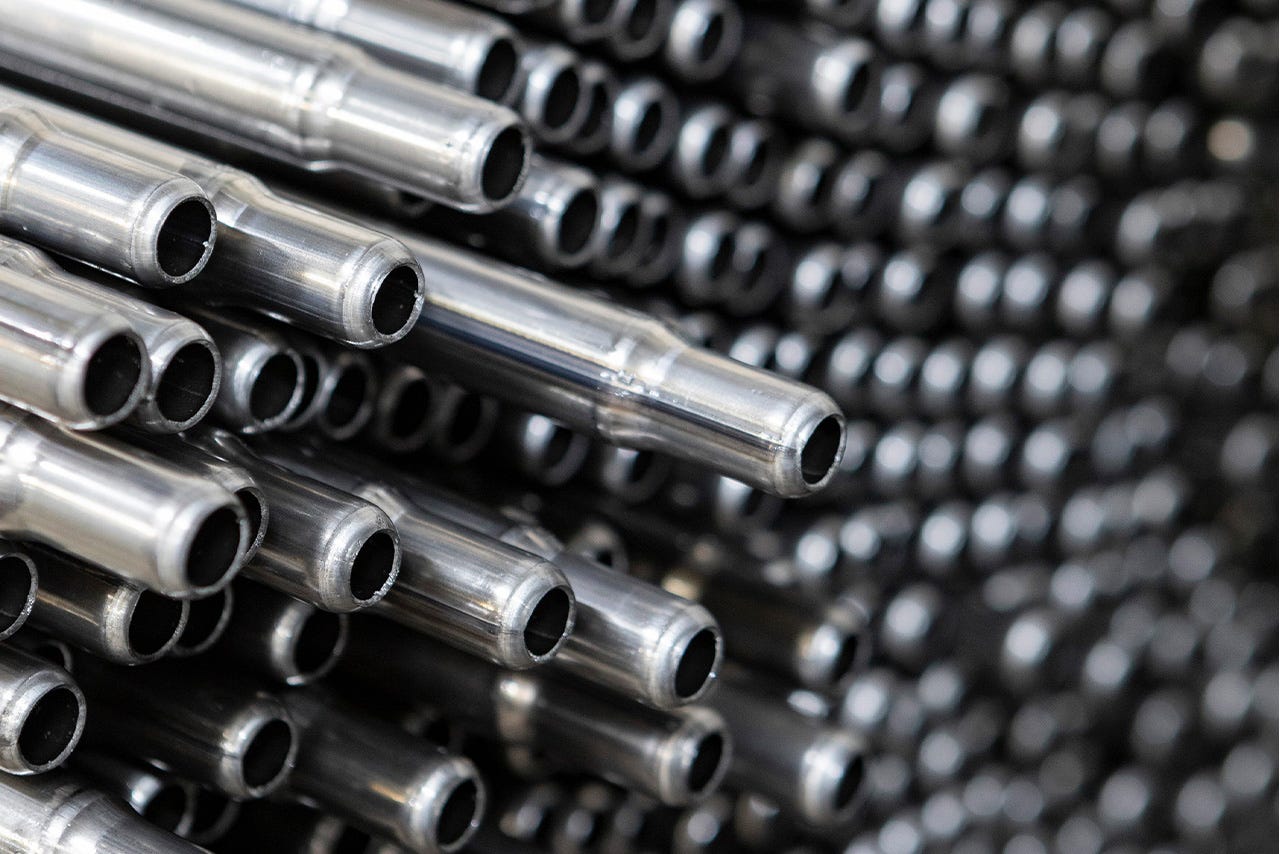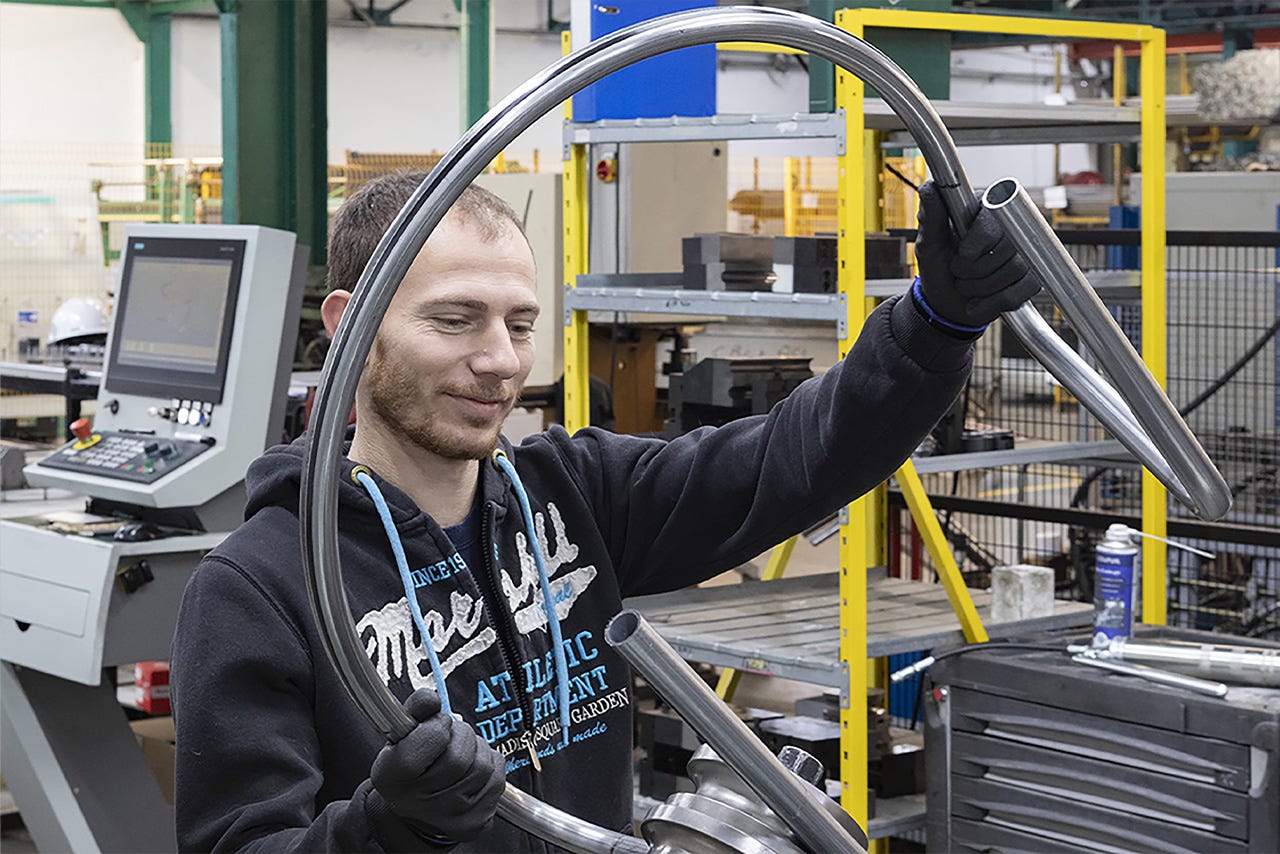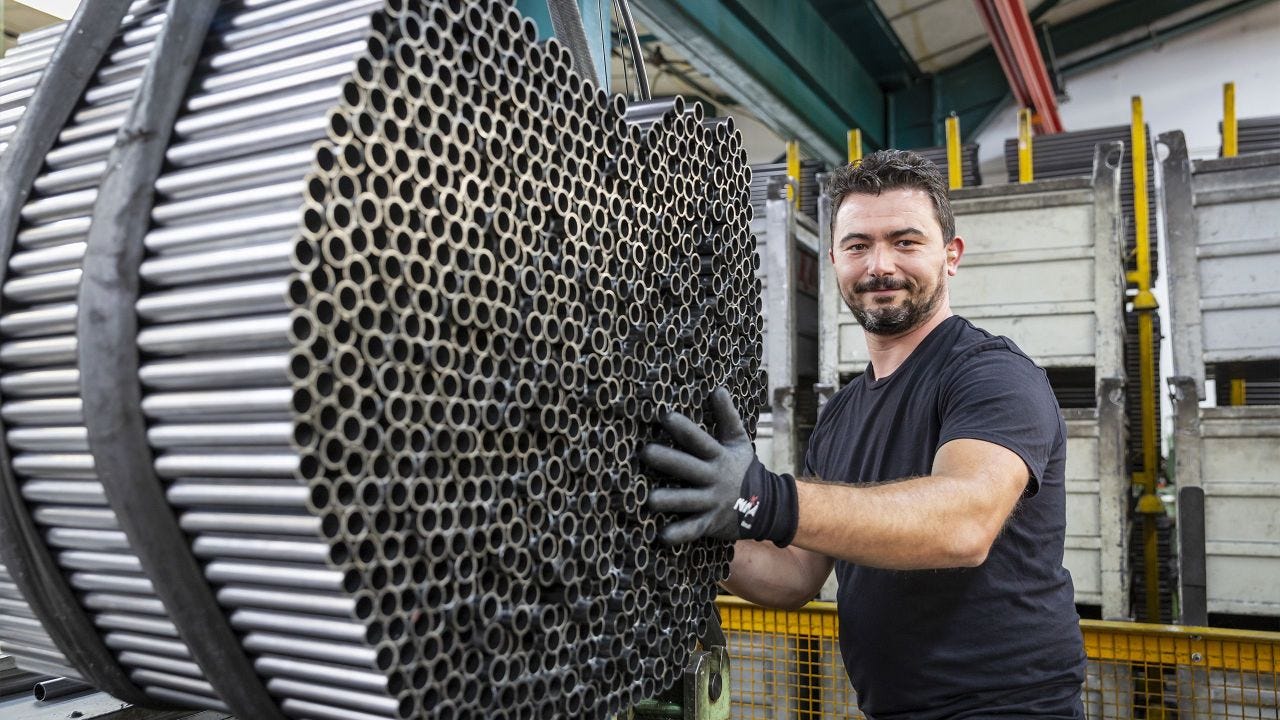🏡📦 Now shipping from our UK warehouse — Fast & Free delivery from £100 😉
Since 1954, our outdoor furniture has been inspired, designed and manufactured in the Drôme region with the aim of providing sustainable products.
Our French know-how
Come and discover our production line behind the scenes, while getting to know our know-how and expertise. In the LAFUMA MOBILIER family, we present you the Tube Workshop! This is a way to bring you to the heart of our Drôme region production facility, and especially to get to know the men and women who make up LAFUMA MOBILIER.
At the heart of tube fabrication
Johann, Florence, Frédéric, Alain & Hervé and about twenty others possess crucial historic know-how. Our production line starts with the manufacture of the metal frame. A tube goes through many steps in this workshop: cutting, swaging, bending, punching, riveting, welding, etc.
The steel or aluminium structure
Aluminium is used for nomadic products which are intended to be very light. It comes from France, Belgium and Spain and 80% of our supplies are recycled. It arrives already cut at the factory and is then shaped in one area, dedicated to aluminium work, where we go from the raw material to the finished packaged product, almost autonomously and in less than 30 metres! A kind of mini-factory within the factory.
As for the steel, it arrives directly from the north of Italy in the form of raw tubes 4.5 to 6 metres long and is made up of 10% recycled materials. All our steel is HLE: High Limit of Elasticity, which means it has excellent functional properties such as suitability for cold forming, profiling and welding. High limit elasticity steels also have a very high level of resistance and make it possible to reduce material consumption.
The first step is cutting with a seven cutting head saw which allows the tube to be cut according to the planned lines (different lengths) and to optimise the cut sizes to limit waste.




The second step for 75% of the cut bars is swaging. This system is the keystone of our eco-design because it makes it possible to slot a tube to form a frame. Concretely, a machine reduces the diameter of one end of the tube so that it can fit into the other end. The advantage? The ease with which the fabric can be fitted to the tube and, for you, the possibility of easily changing your worn fabrics.
In addition to the fitting, the other use of the swaging system is rounding. This consists in rounding the end by pushing the wall inwards. Why? There are many reasons, the first being to limit the risk of cutting or tearing the fabric. Secondly, our concern for quality is reflected in the attention paid to the finish, which is both neat and aesthetic.
The third step concerns the passage of the tube through a bending machine. There are different types: mechanical, hydraulic, CNC. Mechanical 2D benders can shape closed frames and/or U's. The 3D hydraulic bender, in addition to an extra dimension, is also capable of punching (holes in the tubes). Finally, the E-Turn, a 3D digital bending machine purchased in 2017 to produce more complex products: Ancône, Horizon recliners, etc. This high-tech machine has three functions: punching, conventional bending and thrust bending.
The fourth step is welding, which is done either electrically for clevis joints and corrugations (parts for connecting fabrics by lacing or clips), or manually for small parts or professional ranges.
Robotic cells have been installed for the Relax and Maxi Transat, as these are the two main product families leaving our workshops. As they are also very competitive, these products are the most automated, especially assembly and riveting. Strict quality control is carried out. If a product has a visual defect it is sold as seconds in our Anneyron store.
Did you enjoy the tube workshop visit? Next, we’ll take you to see the paint workshop.

